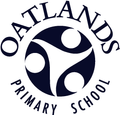Japanese

Konnichi wa!
こんにちは
Welcome back to Japanese for 2025! This year we celebrate the Year of the Snake 巳年 へびどし (he.bi do.shi) in Japanese as part of the juunishi 十二支 (or Japanese zodiac) celebrations.
If you were born in 1965, 1977, 1989, 1988, 2001 or 2013, you are a Snake! That means that most of our Grade 6 students are Snakes! People born in the Year of the Snake tend to be associated with qualities of being clever, brave, deep thinkers, determined, focused, independent, creative, patient and loyal.
At the beginning of Term 1, students in Grade 1 - 6 participated in some activities to assist their understanding of the juu.ni.shi 十二支 (Japanese zodiac), including the completion of some craft activities to assist their learning. They also had the opportunity to write the word for snake in hiragana (he.bi へび), as well as set some goals for themselves.
Preps
We welcome this year our new Prep students into Japanese! In Term 1, the Prep students have been learning some simple greetings and instructions in Japanese:
Good Morning おはよう (o.ha.you)
Good Afternoon (hello) こんにちわ (ko.n.ni.chi.wa)
Goodbye さようなら (sa.yo.u.na.ra)
Stand Up たって (ta.tte)
Sit Down すわって (su.wa.tte)
Students have also been learning to count from 1-10 in Japanese and correctly match the kanji (Japanese & Chinese characters) to the numbers.
1. 一 いち (i.chI)
2. 二 に (ni)
3. 三 さん (san)
4. 四 よん (yon)
5. 五 ご (go)
6. 六 ろく (ro.ku)
7. 七 なな (na.na)
8. 八 はち (ha.chi)
9. 九 きゅう (kyuu)
10. 十 じゅう (juu)
Grade One
Students in Grade One have been revising over one-stroke hiragana, which is one of the writing systems in Japan:
く(ku)、し(shi)、そ(so)、つ(tsu)、て(te)、の(no)、ひ(hi)、へ(he)、る(ru)、ろ(ro) and ん(n)
They also been starting to learn some two-stroke hiragana:
い(i)、う(u)、え(e)、こ(ko)、す(su)、ち(chi)、と(to)、ぬ(nu)、ね(ne)、み(mi)、め(me)、ゆ(yu)、よ(yo)、ら(ra)、り(ri)、れ(re) and わ(wa)
Grade Two
This term, students in Grade Two have been revising over two-stroke hiragana:
い(i)、う(u)、え(e)、こ(ko)、す(su)、ち(chi)、と(to)、ぬ(nu)、ね(ne)、み(mi)、め(me)、ゆ(yu)、よ(yo)、ら(ra)、り(ri)、れ(re) and わ(wa)
They have also been starting to learn some three-stroke and four-stroke hiragana:
あ (a)、お (o)、か (ka)、け (ke)、さ (sa)、せ (se)、に (ni) 、は (ha) 、ま(ma)、む(mu) 、も(mo) 、や(ya) 、を(wo) 、き(ki)、た(ta) 、な(na)、ふ(fu) and ほ(ho)
Grade Three
Grade Three students this term have started to learn about the names of family members in Japanese. We have started this unit by looking at how to count people in Japanese. There is a special counter placed after a number to signify that we are counting people.
Question: かぞく は 何 人 です か。Ka.zo.ku wa na.n ni.n de.su ka? (How many people in your famly?
Answer: かぞく は NUMBER 人 です。Ka.zo.ku wa NUMBER ni.n de.su.
One person: ひとり 一人 (hi.to.ri)
Two people: ふたり 二人 (fu.ta.ri)
Three people: 三人 (san ni.n)
Four people: 四人 (yo ni.n)
Five people: 五人 (go ni.n)
Six people: 六人 (ro.ku ni.n)
Seven people: 七人 (shi.chi ni.n)
Eight people: 八人 (ha.chi ni.n)
Nine people: 九人 (kyuu ni.n)
Ten people: 十人 (juu ni.n)
Grade Four
This term students have started to look at the names of body parts in Japanese. We have started learning the below words by using the Japanese version of the popular song, ‘Heads, Shoulders, Knees and Toes’.
目 (me - eye)
て (te - hand)
は (ha - tooth)
はな (ha.na - nose)
ゆび (yu.bi - finger)
かた (ka.ta - shoulder)
うで (u.de - arm)
おなか (o.na.ka - stomach)
あたま (a.ta.ma - head)
耳 (mi.mi - ears)
あし (a.shi - legs/feet)
あしのゆび (a.shi.no.yu.bi - toes)
ひざ (hi.za - knees)
くび (ku.bi - neck)
のど (no.do - throat)
Grade Five
The Grade Five students this term have been involved in an intensive revision of all 46 Hiragana characters. They have been revising over each of them by using picture stories to aid their recall and memory of them, as well as writing them with the correct stroke order. Students have used their ‘Hiragana Passport’ to learn about, and travel around, the 8 regions of Japan.
Next term students will begin their self-introduction unit based on Sumo Wrestlers.
Grade Six
This term Grade Six students have started their unit called ‘On Your Holidays’ They have been learning the words for a number of different location words, as well as being able to ask and respond to where they went on their holidays.
Question: 休み に どこ に 行きました か。ya.su.mi. ni. do.ko. ni. i.ki.ma.shi.ta? (Where did you go on your holidays?)
Answer: LOCATION に 行きました。LOCATION ni. i.ki.ma.shi.ta.
海 (u.mi - beach)
海外 (ka.i.ga.i - overseas)
山 (ya.ma - mountain)
川 (ka.wa - river)
町 (ma.chi - city)
えいが (e.i.ga - movies)
プール (pu-ru - pool)
友達 の 家 (to.ma.da.chi no. u.chi - friend’s house)
Brown Sensei
Until next time,
Sa.you.na.ra
さようなら
